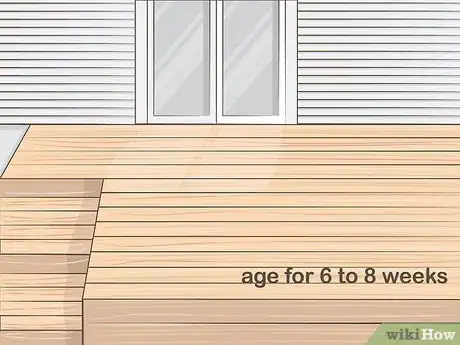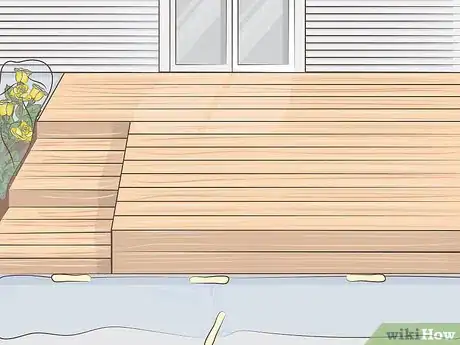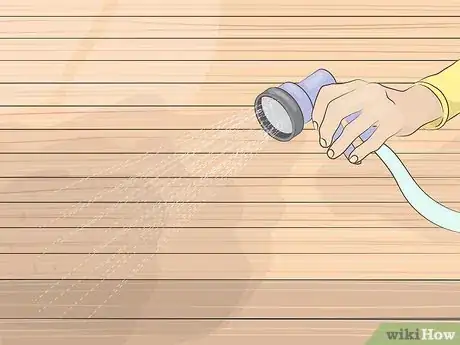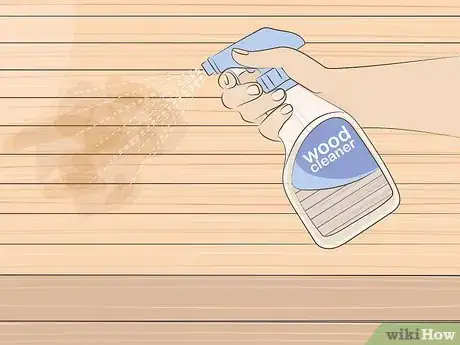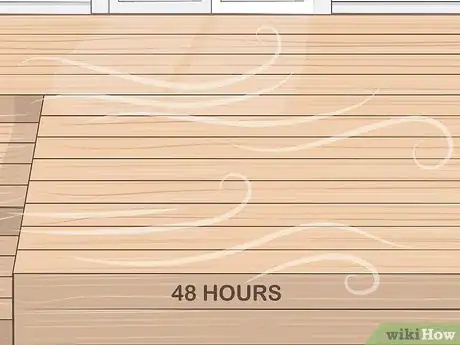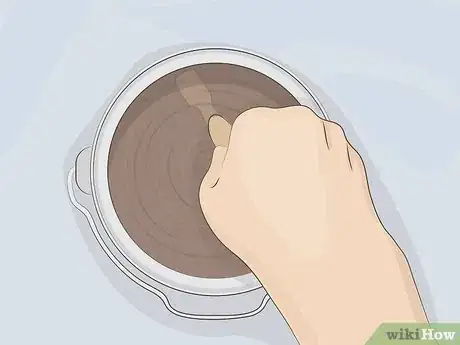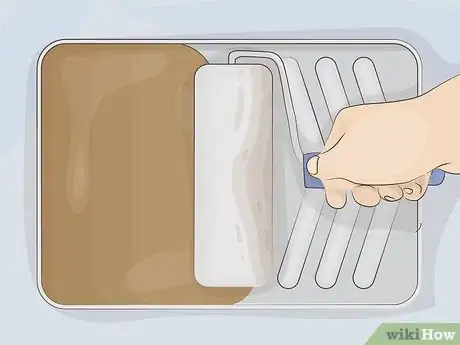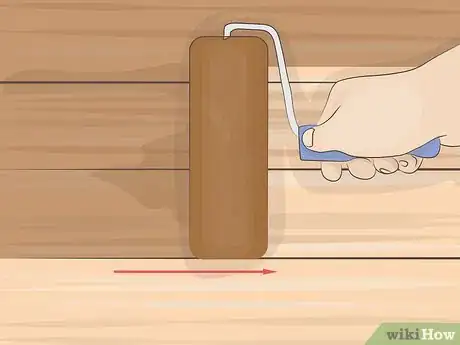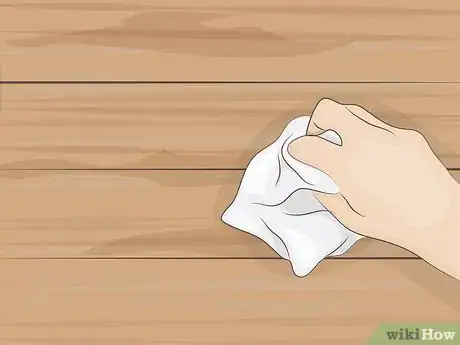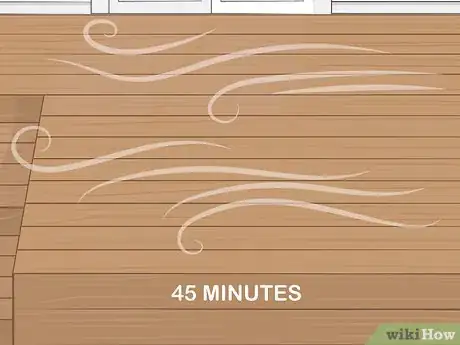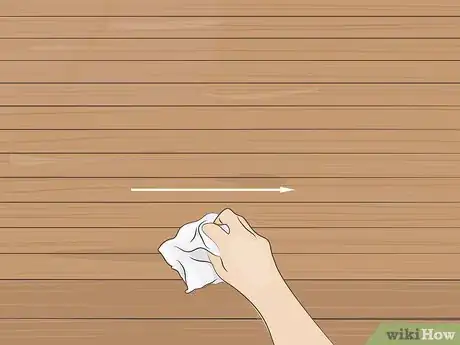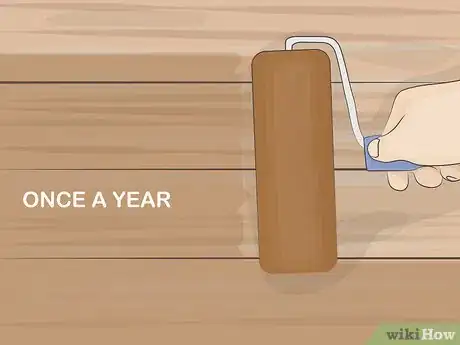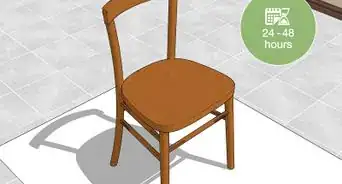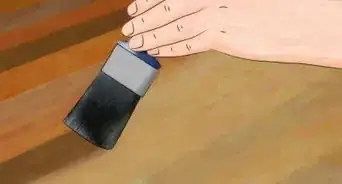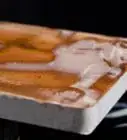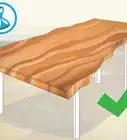This article was co-authored by wikiHow Staff. Our trained team of editors and researchers validate articles for accuracy and comprehensiveness. wikiHow's Content Management Team carefully monitors the work from our editorial staff to ensure that each article is backed by trusted research and meets our high quality standards.
This article has been viewed 18,957 times.
Learn more...
Ipe oil is used to finish and protect decks made from exotic hardwoods like ipe, tigerwood, and cumaru. Using the oil is pretty simple, but it has to be applied on a warm day when there is no rain in your area. After painting on the oil and smoothing out the initial coating, you can reapply the oil every year to ensure your deck always looks vibrant.
Steps
Choosing When to Oil a Deck
-
1Age new wood for 6 to 8 weeks before applying the oil. The manufacturer recommends that you let new wood age for at least 6 weeks before you apply ipe oil. This happens naturally as your deck is exposed to the elements.[1]
- For previously stained or treated decks, the oil can be applied right away.
-
2Wait until no rain is expected for the next 2 days. Not only does the wood need to be dry, but it needs to stay dry after you apply the oil. To avoid water spots, give the oil adequate time to dry. Check the weather forecast for your area first, then apply the oil when you are sure you will have an extended period of dry weather.[2]
- At the very least, the oil needs a full day to dry. Giving it an extra day ensures it dries completely.
Advertisement -
3Choose a day when the temperature is between 45 to 90 °F (7 to 32 °C). Extreme temperatures ruin the oil finish, leaving you with an unsightly mess. For the best results, work on a warm, clear day.[3]
- Try to choose a day when the temperature is closer to the middle of that range than the extremes.
-
4Avoid applying the oil if the wood is hot to the touch. Feel the wood with your fingers before you begin spreading the oil. Trust your fingers. If the wood feels hot, it is hot enough to distort the oil finish.[4]
- If you are working under a full sun, chances are the wood will be too hot.
Preparing the Area
-
1Cover nearby concrete and plants with plastic. To avoid stains and damage to these areas, lay out plastic before you begin applying the oil. You can get plastic sheets from most home improvement stores. Use it to cover grass, bushes, walkways, and driveways adjacent to the deck.
- This is especially useful if you plan on spraying the oil onto the deck, since the oil is likely to splatter.
-
2Rinse off the deck with a hose. Spray off all the dirt and debris. You want the wood to be free of anything that can interfere with the finish. This includes leaves, twigs, and mold.[5]
- Make sure you get any dirt stuck between boards.
-
3Use a wood cleaner to remove tough stains. If you notice any damaged spots, particularly from mold, mildew, or algae, try a wood cleaner. Visit a home improvement store to choose a product designed for wood or decks. All you have to do is spread it over the wood directly from the bottle, then rinse it off after about 10 minutes.[6]
- You may want to choose a biodegradable cleaner, especially if you are cleaning a deck near a lawn or garden.
- You can also try making your own wood cleaner out of 2 US gal (7.6 L) of warm water, 16 fl oz (470 mL) of powdered oxygen bleach, and 2 fl oz (59 mL) of liquid detergent.[7]
-
4Dry the deck for up to 48 hours. The wood needs to dry fully before it can absorb the oil. This will take at least 1 day, although you should wait 2 days to make sure. Check that the wood is dry to the touch before you continue.[8]
- Wet wood leads to water stains underneath the oil, so wait for the deck to dry completely.
-
5Put on a respirator, gloves, and goggles. To avoid fumes from the ipe oil, put on a respirator before you open the can. Wear goggles to avoid getting oil in your eyes. Also, wear long clothing and a pair of gloves so you don’t get any oil on your skin.
Using the Oil
-
1Stir the oil thoroughly. Stir the oil with a wooden mixing stick. This will prevent particles in the oil from settling at the bottom of the can. If you have multiple canisters, it helps to mix them all together to ensure the oil is as uniform as possible.[9]
- You can pour the canisters into a large bucket in order to mix the oil together.
-
2Dip a paint roller into the oil. A 3⁄8 in (0.95 cm) nap roller is an appropriate choice for most decks. You can also use a paint brush, stain brush, or staining pad. However, rollers are the easiest way to quickly and evenly coat large areas. If you need to, pour the oil into a tray so you can coat the roller with oil.[10]
- You can also use a spray gun. Be aware though that you will need to go over the wood with a paint roller to smooth out the coating.
-
3Roll the oil along the wood’s grain. Look closely at the wood to see the direction of the grain. Always apply ipe oil along the grain. Paint over 1 wood board at a time. If possible, avoid stopping until you reach the end of the board.
-
4Rub excess oil into the grain after 5 minutes. Use a clean, dry, cloth rag. Look for any signs of excess oil, such as pooled liquid on top of the wood. Rub the rag along the wood’s grain in these areas. It will work more oil into the wood while absorbing some of the excess.[11]
- The rag's color shouldn't matter, although you can use a white rag if you are worried about the dye bleeding into the wood.
- Oil-soaked rags are flammable, so the rag cannot be cleaned or reused.
-
5Let the oil dry for 45 minutes. Once you have removed as much excess oil as possible, give the oil time to soak into the wood. Wait at least 30 minutes and no more than 45 minutes. After 45 minutes, the remaining excess oil may dry up and become difficult to remove.
- The soaking time can vary a little depending on the weather. It will dry slower in cooler temperatures.
-
6Wipe up any oil remaining on the wood. Go back over the wood with a dry rag. Note any spots where the oil looks thick, wet, or pooled. Scrub the wood along the grain again to absorb the oil. When you are finished, the wood should look dry with a matte finish.
- The finished wood should look dark and even. Spots that look wet or shiny have excess oil.
-
7Dispose of the roller and rag in a sealed container. Store the used items in a shaded area until you are able to prepare the container. Use a resealable metal container, such as the ipe oil canister. Fill the container with water, place the oil-coated items inside it, then seal it.[12]
- Oil-coated items can combust, so they should not be stored in direct sunlight.
- You can take the container to a hazardous waste disposal center or arrange for a special pickup with your regular garbage disposal service.
-
8Reapply ipe oil every year if you want to renew the finish. Ipe oil fades over time. This means your wood surface will begin to look a little plain and gray. To renew the finish, reapply the oil every 1 or 2 years using the same technique.[13]
- If you don’t mind the discoloration, you do not need to reapply the oil. The wood will still be protected by the first coating.
- Apply ipe oil no more than once a year. This prevents the tacky look caused by excess oil.
Warnings
- Avoid applying large amounts of oil. Excess oil leads to a tacky look.⧼thumbs_response⧽
- Store oily rags and painting supplies out of direct sunlight, preferably in a water-filled container to prevent combustion. Dispose of the container as hazardous waste.⧼thumbs_response⧽
Things You’ll Need
- Hose
- Wood cleaner for tough stains
- Plastic tarps
- Wooden paint mixing stick
- Ipe oil cans
- Paint roller
- Clean rag
References
- ↑ http://cdn.manasquanfasteners.com/downloads/ipe-oil-tech-sheets.pdf
- ↑ http://www.keystoneridgedesigns.com/downloads/KRD_Ipe_Maintenance.pdf
- ↑ http://cdn.manasquanfasteners.com/downloads/ipe-oil-tech-sheets.pdf
- ↑ http://www.keystoneridgedesigns.com/downloads/KRD_Ipe_Maintenance.pdf
- ↑ http://www.keystoneridgedesigns.com/downloads/KRD_Ipe_Maintenance.pdf
- ↑ http://cdn.manasquanfasteners.com/downloads/ipe-oil-tech-sheets.pdf
- ↑ https://www.bobvila.com/articles/homemade-deck-cleaner/
- ↑ http://www.keystoneridgedesigns.com/downloads/KRD_Ipe_Maintenance.pdf
- ↑ http://cdn.manasquanfasteners.com/downloads/ipe-oil-tech-sheets.pdf
